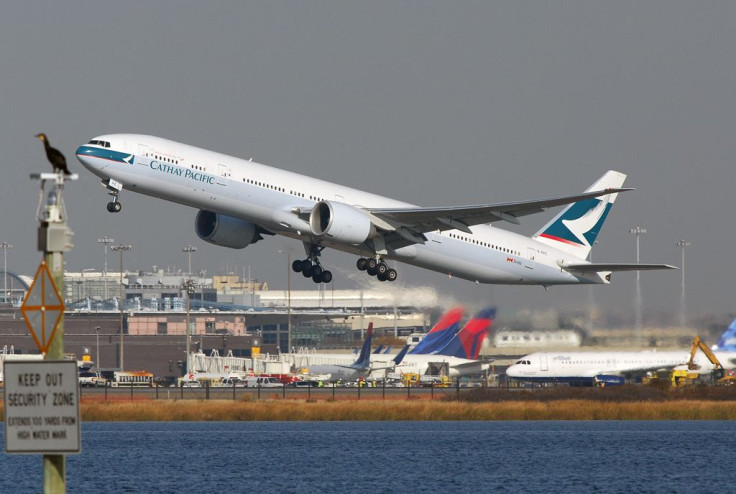Myanmar Now Reachable By Direct Flights On Many Major Airlines, But Visa Situation Still Sticky

Everyone and their money is going to Myanmar, it seems these days, and international airlines are scrambling to make sure they are ready for the rapidly increasing demand from tourists, investors, company executives and anyone else who might visit the newest destination in Southeast Asia.
Tourism has become one of Myanmar’s biggest industries. The country, which until 2011 was largely off-limits to most, welcomed 1.06 million tourists last year. With the government’s plan to spend $500 million to build infrastructure and accommodation for the tourism industry, the total number of visitors could increase to 7.5 million by 2020.
As such, airlines worldwide are now either establishing flights to Myanmar, or boosting the number of their existing flights. More than 20 foreign airlines currently fly directly to cities in Myanmar, ranging from Condor, the German holiday package charter that offers a weekly service to Myanmar, to Thailand’s tiny Nok Airlines PCL (BKK:NOK), according to the Irrawaddy, a Myanmar news outlet based in Thailand.
Nok Airlines is an example of a budget airline. It offers flights on a less crowed route, flying between Mae Sot in northern Thailand and Mawlamyine, in Myanmar’s Mon State, instead of flying into Yangon, the commercial center of Myanmar. Another small airline, Bangkok Airways, operates between Bangkok and the Myanmar cities of Yangon and Mandalay, often as a feeder service for European airlines flying to Bangkok.
Other Asian airlines offering direct flights include China Eastern Airlines Corp. Ltd. (NYSE:CEA), Malaysia Airlines, Laos Airlines, Vietnam Airlines and Cathay Pacific Airways Limited (HKG:0293)’s Dragon Air, which is expected to attract mostly Chinese passengers.
Competition over Thailand-Myanmar routes is especially fierce, as Thai visitors to Myanmar topped the list in the first four months of 2013 at 37,000 out of a total of 253,000 tourists, according to the Ministry of Hotels and Tourism, while Asians totaled 60 percent of the number of visitors during that period, reported the Irrawaddy.
By comparison, major European airlines are more hesitant to fly directly to Myanmar. Many, like British Airways, still fly to Bangkok, where passengers must transfer to Bangkok Airways for a Yangon connection. Middle Eastern airlines, such as Qatar Air, fly out of London to Yangon, but its planes make stops in its Doha base.
Even as airlines add more flights to Myanmar, getting into the country is still relatively cumbersome for tourists and business seekers alike. The visa-on-arrival service, which is unreliable even for business travelers, is especially inefficient for tourists, who “often have to waste up to a week waiting for an embassy to clear paperwork,” said the TTR Weekly, a travel trade magazine.
“The visa-on-arrival that is in place for business visitors requires a letter of invitation from a government department or commercial enterprise," the said TTR Weekly said. "It is essentially a pre-processed visa that is activated at the airport by immigration officials.”
There is also confusion over who qualifies for a visa-on-arrival, which has led the U.S. State Department’s Bureau of Consular Affairs to issue an advisory to potential visitors to Myanmar, urging them “not to consider the visas-on-arrival program a viable alternative to a visa.”
It is not any easier for citizens of Myanmar’s Southeast Asian neighbors to visit the country, according to TTR, as it is unclear when Myanmar will relax its visa requirements for visitors from fellow member countries in the Association of Southeast Asian Nations (ASEAN). The association’s regulations require all 10 member states be allowed visa-free entry for up to 14 days for citizens of the region, the Irrawaddy reported.
Yangon International Airport is currently Myanmar’s main international hub, and it received 500,000 out of 600,000 people who arrived by air in 2012, according to government statistics. The airport can handle around 2.7 million passengers annually, but it will be upgraded to have a capacity of six million by 2017.
In addition, the contract to build and operate Hanthawaddy International Airport was awarded to South Korea’s Incheon International Airport recently. The new hub, which will be based near the city of Bago, located an hour-and-a-half drive from Yangon, will be able to handle 12 million passengers each year, greatly expanding Myanmar’s overall capacity to receive visitors.
© Copyright IBTimes 2024. All rights reserved.











